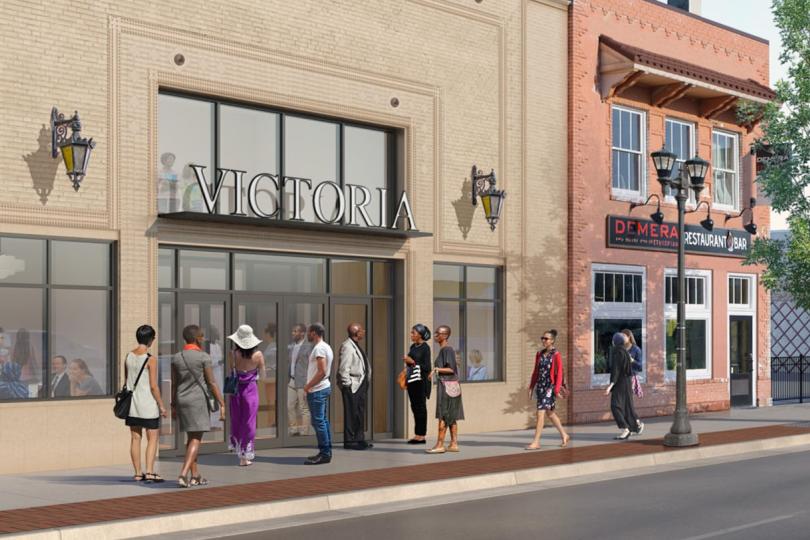Of, by, and for the community.

The Frogtown and Rondo neighborhoods of Saint Paul are filled with performance artists, but very few performing venues. The Victoria Theater Arts Center (VTAC), helmed by executive director Julie Adams Gerth and a dedicated board, is working to change that.
A little history: The Victoria Theaterwas designed by architect Frank Ellerbe and served as a silent film house in 1915. By 1925, it was a thriving nightclub and speakeasy. In 1927, “Moonshiner’s Dance: Part One” was recorded at the theater. That song, reports Saint Paul Historical, “is the only one of 84 recordings in the Anthology of American Folk Music not recorded in the American South or Chicago.” However, by 2009, the building was vacant and had fallen into disrepair. It was slated for demolition so the land could be used as a parking lot. But a determined coalition of neighborhood residents and organizations secured heritage preservation status for the building in 2011. In 2014, the Twin Cities Land Bank purchased the property and “executed a purchase agreement with the Frogtown Neighborhood Association,” according to VTAC’s website.
Now, the board and staff of VTAC are raising funds to repair the building and make the vision of a thriving cultural hub into a reality. Board member Dameun Strange—a composer, artist, and Frogtown resident—describes how neighborhood residents were a fundamental part of shaping what would happen to the rescued building. A series of listening sessions were held, inviting anyone to attend and share their ideas for the space in conversation, written word, or even drawings, Strange says. Responses all boiled down to this: neighborhood residents wanted “something that feels like the heart of the community, open to everyone,” Strange says.
This area is “a deeply creative community with a lot of artists,” Strange says, so an arts center and gathering space makes sense. He explains that VTAC will likely not offer much of its own programming but will instead serve as a venue for area artists and as space for things like health screenings for residents. Strange sees it as “more community-driven than a lot of other venues,” and cited Mixed Blood Theatre and Bedlam as sources of inspiration, places that blend art and community.
Programming and mission aside, just restoring such an old building comes with challenges. Currently, VTAC is in the midst of a capital campaign. Executive Director Julie Adams Gerth listed a new roof and improved drainage and stabilization as the big goals. The design for the space was revealed in a neighborhood party at Arnellia’s Bar and Restaurant on October 24, 2018. With that work underway, “we will again look to the community for programming insight,” Adams Gerth adds. “What is the community interested in and passionate about?”
When asked what they hope people say about VTAC years down the road, Strange says he hopes plenty of artists can point to the venue as the space where they performed their first show, or where a resident can say they saw their first play. He wants VTAC to be a “beacon of creativity on University Avenue,” the center of an arts district where neighborhood artists are valued and given space to practice their art.
Adams Gerth says, “I see the Victoria being known as a permanent fixture, something that has always been there and is woven into the community’s identity. At the same time, always paying attention to what is needed, being fiscally responsible and remaining relevant.”
Overall, VTAC’s goal is to be of, by, and for the community. “You don’t have to be a million-dollar donor to feel involved,” Strange explains.
To learn more and support VTAC, visit their website here.




